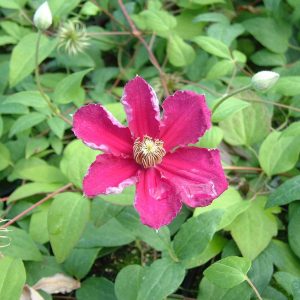Description
Primula rosea ‘Grandiflora’ is a lovely perennial that produces stunning, pink flowers on tall stems. It prefers a shaded position in moist, well-draining soil and blooms from late spring to early summer. The flowers are fragrant and attract pollinators, making it a great addition to any garden. This variety of Primula rosea is known for its larger blooms and strong stems, making it a standout in any garden or container display. To care for this plant, ensure it is kept well-watered and deadhead spent blooms regularly to encourage new growth and more flowers.
Key Facts
- Common Name(s):rosy Primrose
- Hardiness:Fully hardy
- How big will I get? Primula rosea ‘Grandiflora’ can grow to a height of 0.5m and a spread of 0.5m.
- Did You Know That:The leaves of Primula rosea are hairy, heart-shaped, and form a basal rosette.
Plant Calendar
A rough guide to how this plant will change through the year.
| Jan | Feb | Mar | Apr | May | June | July | Aug | Sept | Oct | Nov | Dec | |
| Flowering Time |   |
  |
  |
|||||||||
| Foliage Colour |   |
  |
  |
  |
  |
  |
  |
  |
  |
| J | F | M | A | M | J | J | A | S | O | N | D |
  |
  |
  |
|||||||||
  |
  |
  |
  |
  |
  |
  |
  |
  |
Care Guide

Soil Requirements
Primula rosea ‘Grandiflora’ thrives in wet or damp soil with decent drainage or in poorly draining soil. This plant is not tolerant of alkaline soil, it requires either a neutral or acidic soil to grow.

Best Position
Primula rosea ‘Grandiflora’ can handle either an exposed or a sheltered position and can cope with either full sun or partial shade.

Maintenance
Primula rosea ‘Grandiflora’ should be cut back after it finishes flowering will promote growth the following year by redirecting energy from seed production and foliage maintenance to root growth.

Pest, Diseases and Wildlife
Primula rosea ‘Grandiflora’ can have problems with aphids, vine weevil and slugs, and it tends not to have problems with diseases. It is also known to attract bees. It is toxic to cats, dogs and horses.





